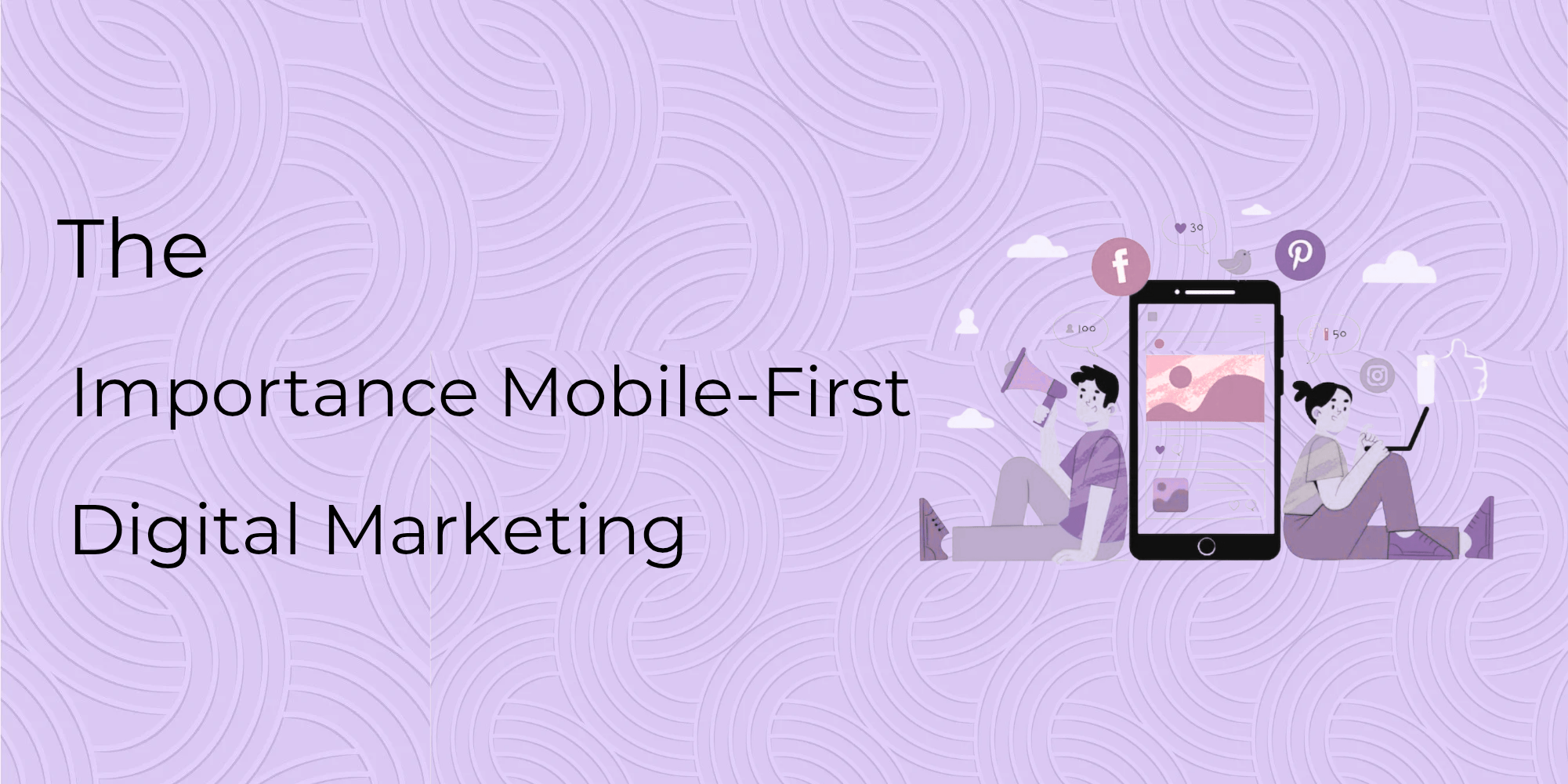In today’s rapidly evolving digital world, companies that do not put mobile-first approaches first risk getting left behind. The transition from desktop to mobile is not merely a wave but a sea change in consumer interaction with brands. As smartphones become an extension of our own selves, digital marketing needs to evolve to connect with audiences where they find themselves: on their mobiles.
● Why Mobile-First Is More Important Now Than Ever
- Mobile Use Has Surpassed Desktop
Recent statistics reveal that:
- More than 60% of global internet traffic originates from mobile devices.
- In the United States alone, 85% of adults have a smartphone.
- Users spend 4+ hours per day on their phones.
This major change makes it critical for brands to go where consumers are spending most of their time.
- Google’s Mobile-First Indexing
Google officially switched to mobile-first indexing, where it mainly employs the mobile version of a site’s content for ranking and indexing. If your mobile site is not well-designed or takes longer than your desktop site, your SEO rankings can be impacted—even on desktop search. - Social Media and Mobile Are Interconnected
Most social media usage occurs on mobile apps. Whether Instagram, TikTok, Facebook, or Twitter, users are clicking, liking, sharing, and viewing ads on their smartphones. With this, mobile optimization is essential for social media marketing success.
● Main Advantages of Mobile-First Online Marketing
- Better User Experience (UX)
Mobile-first design makes your site load quickly, navigate well, and look good on smaller screens. It can decrease bounce rates and improve conversions. - Improved Engagement Rates
Mobile users tend to be more engaged. Notifications, social share buttons, mobile-optimal emails, and app integration can result in quicker interactions and responses. - Improved Conversion Rates
A frictionless mobile experience—with click-to-call buttons, auto-fill forms, and quick load times—eliminates barriers to the purchasing process. This results in increased mobile conversion rates, particularly for local search. - SEO Benefits
Mobile-first sites rank better on search engine results thanks to Google’s mobile-first indexing. Moreover, responsive and mobile-optimized pages usually rank higher in terms of load speed, which is another vital ranking factor.
● Major Advantage of Mobile-First Digital Marketing
- Enhanced User Experience (UX)
Mobile-first design ensures your site loads quickly, is simple to use, and looks great on small screens. A proper mobile experience can help lower bounce rates and boost conversions. - Increased Engagement Rates
Mobile users tend to be more engaged. Notifications, social buttons, mobile-friendly email, and app integration can result in quicker interaction and response. - Improved Conversion Rates
A frictionless mobile experience—with click-to-call buttons, auto-fill forms, and quick load times—takes the hassle out of buying. This translates into increased mobile conversion rates, particularly for local searches. - SEO Benefits
Mobile-first sites rank higher in search engine results because of Google’s mobile-first indexing. Furthermore, responsive and mobile-optimized pages also generally have improved load speeds, which is another ranking factor.
● Key Components of a Mobile-First Strategy
- Responsive Web Design
A responsive website adapts content, layout, and images automatically to any screen size. It makes your website both functional and great-looking on all devices—but it’s got to be designed mobile-first. - Fast Loading Speed
As stated by Google, 53% of mobile users leave a website if it does not load within 3 seconds. Compress images, use fewer scripts, and cache to enhance mobile page speed. - Mobile-Friendly Content
- Shorter headlines and paragraphs.
- Avoid text blocks.
- Utilize bullet points, subheadings, and bold.
- Keep CTAs (Call-To-Actions) easy to click with a thumb.
- Touch-Friendly Interface
Make navigation and button design thumb-friendly. Keep in mind the “thumb zone”—the portion of the screen most conveniently accessible when holding a phone—when positioning primary actions and content. - Voice Search Optimization
More mobile users make use of voice assistants such as Siri, Google Assistant, or Alexa. Voice search optimization using conversational keywords and local intent can greatly increase discoverability.
● Mobile-First Marketing Channels
- Mobile SEO
Optimize your site’s structure, page loading speed, and content for mobile users. Utilize mobile-first indexing tools to audit your site and correct problems. - SMS and Push Notifications
These one-to-one communication channels have higher open rates than email. If used strategically, they have the power to drive customer engagement, retention, and sales. - Mobile PPC Ads
Google Ads and Facebook Ads let you specifically target mobile users. Carousel ads, vertical video, and shoppable posts are just some of the ad formats for mobile devices that can boost conversion rates when optimized for smartphones. - Mobile Apps
If you have a dedicated app for your business, it unlocks new levels of engagement for your customers. Loyalty schemes, promotions, and personalized experiences can all be pushed through mobile apps. - Social Media Marketing
Instagram, Snapchat, TikTok, and Facebook are mobile-first. Vertical video, Stories, Reels, and short-form content need to be optimized for mobile display to perform well.
● Mobile-First’s Effect on Consumer Behavior
- Micro-Moments
Mobile phone users tend to have “micro-moments”—short interactions where they:
- Want to know something
- Want to go somewhere
- Want to do something
- Want to buy something
Marketers must be there in these moments with contextually relevant, actionable content to inform the user decision path.
- Local Search and Mobile
Almost 76% of individuals who search for something local on their smartphone visit a corresponding business in a day. Mobile-first strategies that involve local SEO, Google Business Profiles, and map optimization can drive actual foot traffic.
● Common Mistakes to Avoid in Mobile-First Marketing
- Forgetting about mobile load time: A slow mobile website can harm SEO and user experience.
- Cover-up pop-ups: Google punishes intrusive interstitials on mobile.
- CTAs that are unclickable: Tiny CTAs or badly placed CTAs make it more difficult for users to convert.
- Not testing on devices: Various phones and operating systems might show your site differently—always test.
● Mobile-First Success Stories
- Amazon
Amazon’s mobile-first strategy makes it easy for customers to browse, compare, and purchase with a few taps. One-click checkout, tailored product suggestions, and real-time order tracking deliver a seamless mobile experience. - Starbucks
Starbucks’ mobile app combines loyalty rewards, payments, and store locators. With more than 30 million active users, it demonstrates that mobile-first strategies can make online and in-store experiences better. - Nike
Nike mobile campaigns are centered on personal experiences, mobile exclusives, and interactive stories. Their apps (SNKRS, Nike Run Club) deliver value outside of products, creating brand affinity through mobile interaction.
● Transitioning to a Mobile-First Marketing Approach
- Audit Your Existing Digital Footprint
- Utilize tools such as Google’s Mobile-Friendly Test and PageSpeed Insights.
- Test your website, landing pages, emails, and ad formats.
- Rebuild with Mobile First
- Rebuild your digital assets from the smallest screen.
- Employ scalable assets, fluid layouts, and mobile-optimized fonts.
- Invest in Mobile Analytics
- Google Analytics 4, Hotjar, and Mixpanel offer in-depth intelligence on mobile user behavior.
- Make Mobile Content Creation a priority
- Produce vertical video content.
- Employ mobile-first ad formats (e.g., Stories, carousels, and TikTok ads).
- A/B Test for Mobile
- Conduct A/B tests with a mobile-centric orientation: CTAs, design, imagery, loading speeds, etc.
● The Future of Mobile-First Marketing
Thanks to 5G, augmented reality (AR), and mobile commerce (m-commerce), mobile-first marketing will become increasingly immersive and interactive. Brands will have to continue innovating to develop personalized, real-time experiences that engage users on the go.
We’re also seeing the rise of mobile-first AI tools, chatbots, and virtual shopping assistants, which will further reshape how consumers interact with brands.
Final Thoughts
Mobile-first digital marketing is no longer optional—it’s the foundation of modern marketing. As consumers increasingly rely on their smartphones for everything from shopping to socializing, businesses must adapt or risk becoming irrelevant.
By being mobile-first-focused, brands can improve user experience, SEO, engagement, and ultimately conversions. Whether it’s a small business or an international company, adopting a mobile-first orientation is central to success in today’s digital economy.


